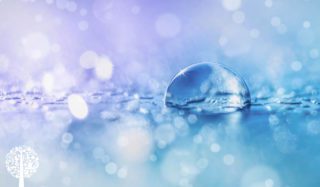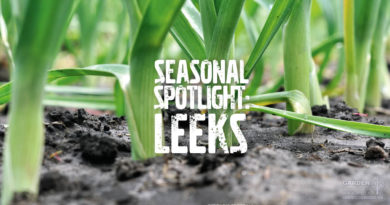Hell No To Nasty H20! Water Quality And Garden Plants |
“Water water everywhere but not a drop to drink,” the rhyme of the Old Mariner reads, coined because out at sea, even though water is all around, it is rarely ever suitable for drinking.
Many gardeners face a similar problem. No matter the cultivation style, the quality of the water given to plants makes a profound difference, from the garden’s overall health to resulting yields, especially when growing organically.
They’re Just Like Us!
Just as drinking tainted water can make humans sick, the same can happen to plants. Heavy metal and chemical contamination, poor oxygen levels, and pathogenic, anaerobic microbes can cause severe damage to a plant’s rhizosphere.
With organics, the deliberate contamination of municipal water with sterilants (chlorine/chloramine) can shut down and outright kill beneficial microbe colonies, resulting in dead soil that doesn’t function. This impaired microbe functioning means compromised nutrient cycling. In short, plants starve despite having plenty of food around.
So just like for our bodies, we try to choose the cleanest, healthiest water possible. Similarly, you should strive to give your garden the best source of water available to you. Sure, we might prefer different things (I certainly don’t want to choke down a glass of compost tea!), but the focus should be on quality. We want a pure source, with the only hitchhikers being the things we add in ourselves.
Rainwater
There are many options for water supplies. The most obvious (and arguably the best) choice for many people is the stuff that falls out of the sky. Rainwater harvesting is encouraged in many dry climates; it has the advantage of no sterilants added to it, which is especially helpful when watering organic living soil and brewing aerated compost teas, where killing microbes is of concern.
Depending on the cleanliness of the area where your water is harvested and how it is stored, there can be many impurities present, everything from leaf debris and dirt to mosquito larvae, which, while organic, is better to avoid. Unfortunately, rainwater also has no buffering for pH. It is often quite acidic, which depending on the cultivation style, may facilitate the addition of something like a carbonate source to prevent it from dropping down too far. For soil, this generally isn’t as much an issue as it is in a salt-based grow, as microbes can supply plants with nutrients over a much wider range than the narrow band of salts.
Most people store their water in tanks. However, larger gardens take advantage of open dams, making them vulnerable to more significant amounts of contamination. When using this water source, filtration is the way to go. A particulate filter, coupled with a polishing stage (usually charcoal) filter, will give you some high-quality H2O. Some people also incorporate a UVC globe to sterilize the water directly. For soil, this is probably overkill, but more sterile cultivation methods are recommended.
City Water
Often, a municipal or town water supply is the most convenient option for gardeners, as not everyone can harvest rainwater or has a place to store it. Municipal water can come right out of a tap in a clean, drinkable manner. Still, chemicals and minerals have been added at the water treatment plant to prevent the growth of microbes, adjust pH, and prevent dental decay in the case of fluoride. These things can be detrimental, especially in soil gardens.
You can fix chlorinated water sources by filling your watering vessel 24 hours before adding an airstone to keep it oxygenated. This will off-gas the chlorine to very low levels but will not remove the chloramine portion, which some states and councils have started using. To clear this additive and others like fluoride, consider a filtration method. A particulate filter may not be required as with the rainwater. Still, a specific anti-chlorination and chloramine filter along with a charcoal polishing stage will provide fantastic water quality suited to organics. A reverse osmosis filter also works wonders on this type of water source. However, while RO gives immaculately clean water, it takes a while to process, and as a result, wastes a lot of water. It is also expensive to replace parts on this kind of filter.
Well Water
Well water is often the only option for some inland, rural towns, with neither enough rain to harvest regularly nor enough people living in the area for a municipal reservoir. Unfortunately, of all the sources, this one comes with the most impurities and potential for problems. The quality of well water varies considerably. Very rarely is it top quality coming right out of the tap; it’s often loaded with sulfur, iron, and other underground minerals (even heavy metals) that make their way into the supply from underground aquifers. This kind of water often stains surfaces it lands on and has a pronounced rotten egg odor.
You can make anything work, but you’ll have to put a lot of effort into a water source like this. A progressive particulate filtration system is paramount to catching the sediment. A cleaning stage such as charcoal is also needed to take out whatever is left. Additionally, a UVC light for sterilization is highly recommended to kill off any bad anaerobes that are brewing in the mix. RO is not recommended as the first form of filtration in this case because the water needs to be cleaned before it can be deep cleaned. If you use an RO filter before cleaning the water, you will find yourself replacing the membranes rapidly. But it can be beneficial as a final stage.
Pure water is the cornerstone of life and a significant component in a healthy, productive and flourishing garden. So don’t skimp on your source!







